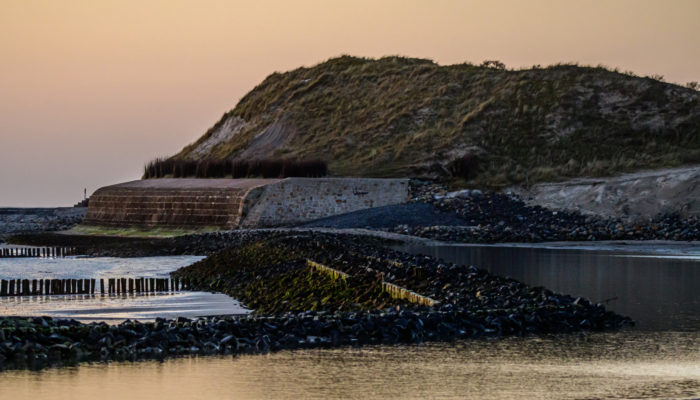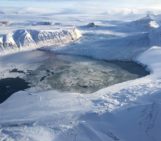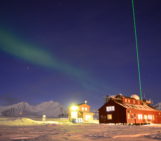
Different structures for coastal management at Spiekeroog, Germany. The structures include a groyne and a revetment.
Groynes are cross-shore structures, linearly ordered from the shoreline and into the sea. Typically made of rock or wood, groynes are built to limit the longshore transport and loss of shore material like sand or shingle. The build-up shore material captured by the groynes results in a broader beach in the updrift region, to the benefit of increasing the buffer against erosion provided by the beach. In the photo above, multiple groynes can be seen to have been built in long, thin lines of wooden stakes.
Revetments are sloping walls situated along the base of coastal cliffs, and are built to protect against the erosive action of waves and storm surges. The choice of armouring material used to construct a revetment – such as wood, rock, brick, or concrete – each bring with them their own benefits and limitations. Permeable revetments are often made from rock or wood, and are effective at dissipating wave energy due to their irregular surface. Impermeable revetments, such as the one depicted above, are characterised by a continuous, sloping surface of concrete or brick, and typically last longer.
Photo and caption by Stephan Sprinz, shared on imaggeo.egu.eu.
Imaggeo is the EGU’s online open access geosciences image repository. All geoscientists (and others) can submit their photographs and videos to this repository and, since it is open access, these images can be used for free by scientists for their presentations or publications, by educators and the general public, and some images can even be used freely for commercial purposes. Photographers also retain full rights of use, as Imaggeo images are licensed and distributed by the EGU under a Creative Commons licence. Submit your photos at http://imaggeo.egu.eu/upload/.




